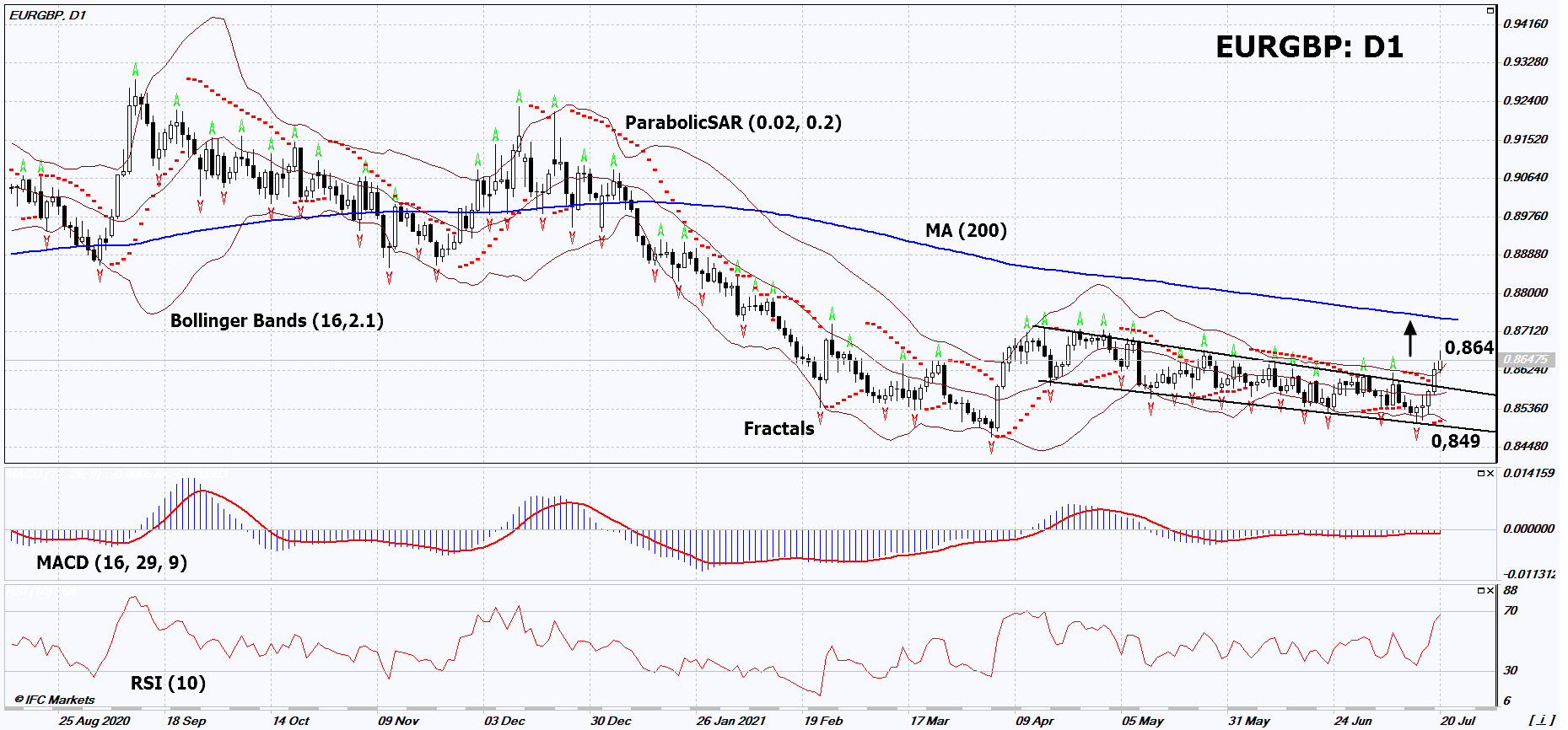Recommendation for EUR/GBP:Buy
Buy Stop : Above 0,864
Stop Loss : Below 0,849
RSI : Neutral
MACD : Neutral
MA(200) : Neutral
Fractals : Buy
Parabolic SAR : Buy
Bollinger Bands : Buy
Chart Analysis
On the daily timeframe, EURGBP: D1 went up from the descending channel. A number of technical analysis indicators have generated signals for further growth. We do not rule out a bullish movement if EURGBP: D1 rises above the upper Bollinger band: 0.864. This level can be used as an entry point. The initial risk limitation is possible below the Parabolic signal, the last lower fractal and the lower Bollinger line: 0.849. After opening a pending order, move the stop to the next fractal low following the Bollinger and Parabolic signals. Thus, we change the potential profit / loss ratio in our favor. The most cautious traders, after making a deal, can go to the four-hour chart and set a stop-loss, moving it in the direction of movement. If the price overcomes the stop level (0.849) without activating the order (0.864), it is recommended to delete the order: there are internal changes in the market that were not taken into account.
Fundamental Analysis
British authorities lifted quarantine and the number of patients with coronavirus increased. Will the rise of EURGBP quotes continue? An upward movement signifies a weakening of the British pound against the euro. On July 19, the so-called “freedom day” took place in Britain and almost all restrictions related to the coronavirus epidemic were lifted. On Monday, the number of people infected with Covid-19 in the country amounted to 40.6 thousand, and on Tuesday, July 20, it increased to 46 thousand. An additional negative for the pound was weak macroeconomic data on the labor market, published last week. Against this backdrop, the Bank of England can maintain its soft monetary policy aimed at economic stimulation. Its meeting will be on August 5. In turn, the euro is showing stability ahead of the next meeting of the European Central Bank (ECB), which will take place on 22 July. German producer prices for June (Producer prices index YoY) were released on Tuesday. They amounted to 8.5% and again approached the 40-year maximum, as at the height of the 2008 crisis. Investors do not exclude that against the backdrop of a surge in industrial inflation, the ECB will announce any plans for the future tightening of its monetary policy.
